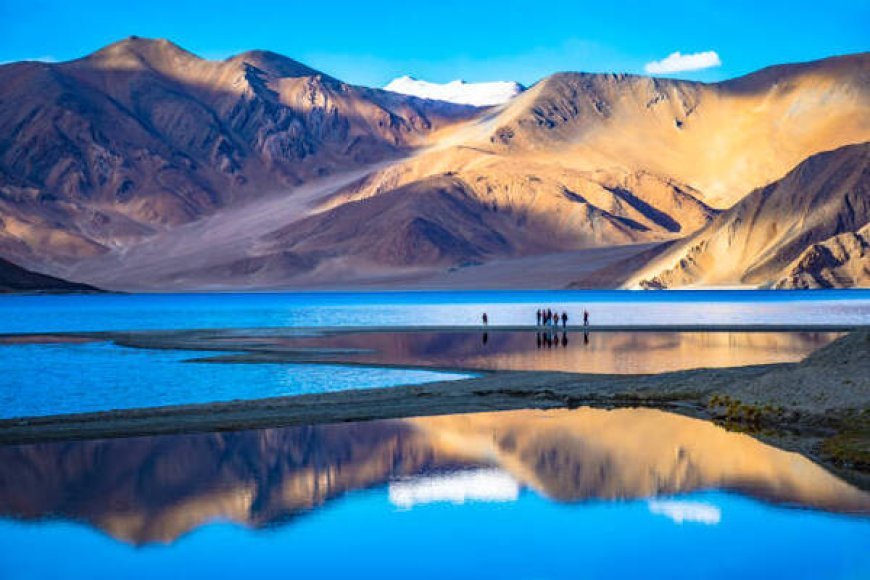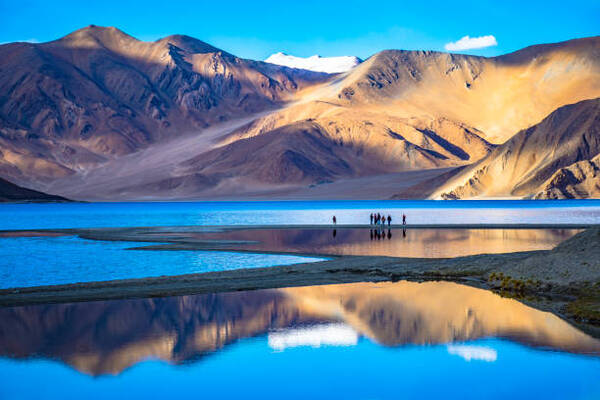India Empowers Ladakh Youth As Astro Ambassadors To Ignite A New Era Of Space Tourism In The Himalayas


Ladakh’s remote landscapes are no longer just a draw for adventure seekers—they’re now becoming a beacon for global astronomy tourism, thanks to India’s bold initiative to empower local youth as Astro Ambassadors. Trained in night sky navigation and telescope operation, these young stars of Hanle are not only boosting sustainable tourism in India’s only dark sky reserve but also transforming the region’s economy and identity. By turning stargazing into a profession, they’re helping India claim its place on the map of global astro-tourism, while showcasing how rural empowerment and scientific curiosity can reshape the future of travel.
In the high-altitude wilderness of Ladakh, a new form of tourism is emerging under the brilliant canopy of stars. In the remote village of Hanle, nestled close to India’s northern frontier, a group of local youth has embraced an unusual yet captivating profession—night-time astronomy tourism. These young individuals, now known as “Astro-ambassadors,” are leading a transformative movement that fuses science, culture, and sustainable tourism.
Hanle is home to India’s first and only dark sky reserve, an officially recognized zone with minimal light pollution, making it one of the best locations in the country for stargazing. In December 2024, a 22-kilometre-wide stretch of this remote terrain was designated as the Hanle Dark Sky Reserve (HDSR). This initiative was born out of a joint effort between the Union Territory of Ladakh, the local autonomous council in Leh, and a leading national astrophysics institution. The primary goal: to protect the region’s pristine night sky while opening up new avenues for eco-conscious tourism.
Equipped with high-powered telescopes and trained in the fundamentals of astronomy, the Astro-ambassadors offer visitors an unforgettable celestial experience. Tourists who travel to this far-flung corner of India are rewarded not just with panoramic views of barren landscapes and snow-capped peaks, but also with guided night-time sessions under a sky ablaze with stars, planets, and distant galaxies. The experience is immersive, educational, and deeply inspiring, especially for those with a passion for the cosmos.
What sets this initiative apart is its strong focus on empowering local communities, especially women. Currently, 24 Astro-ambassadors are actively involved in the project, and a notable 70 percent of them are women. Their participation reflects a broader social transformation, where opportunities in science and tourism are helping bridge gender gaps in one of the country’s most isolated regions. These women, trained in astronomy and public engagement, now serve as the face of a movement that’s redefining the narrative of rural development in Ladakh.
Tourism in Ladakh has historically been centered around adventure sports, monasteries, and scenic drives across rugged mountain passes. While these continue to attract travelers, the shift toward astro-tourism represents a new chapter that emphasizes knowledge, sustainability, and ecological preservation. The dark sky reserve is more than a tourist attraction—it is a protected zone where artificial lighting is strictly regulated, helping to maintain the natural rhythm of the nocturnal ecosystem and reduce carbon footprints.
However, the need for such environmentally conscious tourism is becoming urgent. Ladakh is not just one of the most beautiful places in India—it is also one of the most vulnerable. Its cold desert environment is characterized by minimal vegetation, fragile ecosystems, and temperature extremes that can swing dramatically between day and night. In recent years, the region has seen a sharp rise in infrastructure development, including roads, hotels, and military installations. While these projects have brought connectivity and investment, they’ve also contributed to a growing environmental strain.
Climate change has begun to alter the very fabric of Ladakh’s landscape. Glacial retreat, erratic weather patterns, and water scarcity are now part of daily life in many parts of the region. Against this backdrop, the Hanle Dark Sky Reserve offers a model for how tourism can be both profitable and planet-friendly. By limiting the impact of human activity after sunset and preserving the night sky in its most natural form, the initiative demonstrates a balance between exploration and conservation.
Visitors who come to Hanle for astro-tourism often leave with more than just photographs—they carry with them a renewed sense of wonder and a deeper appreciation for the universe and Earth alike. The success of the Astro-ambassadors, many of whom come from humble backgrounds, proves that with the right training and support, local communities can lead the charge in redefining tourism for a changing world.
As the stars continue to shine over Hanle’s silent valleys, this initiative serves as a reminder that sometimes, looking up can be the most powerful way to move forward. In a region where climate challenges loom large, turning to the skies may just be the key to creating a brighter, more sustainable future on the ground.
The post India Empowers Ladakh Youth As Astro Ambassadors To Ignite A New Era Of Space Tourism In The Himalayas appeared first on Travel And Tour World.






